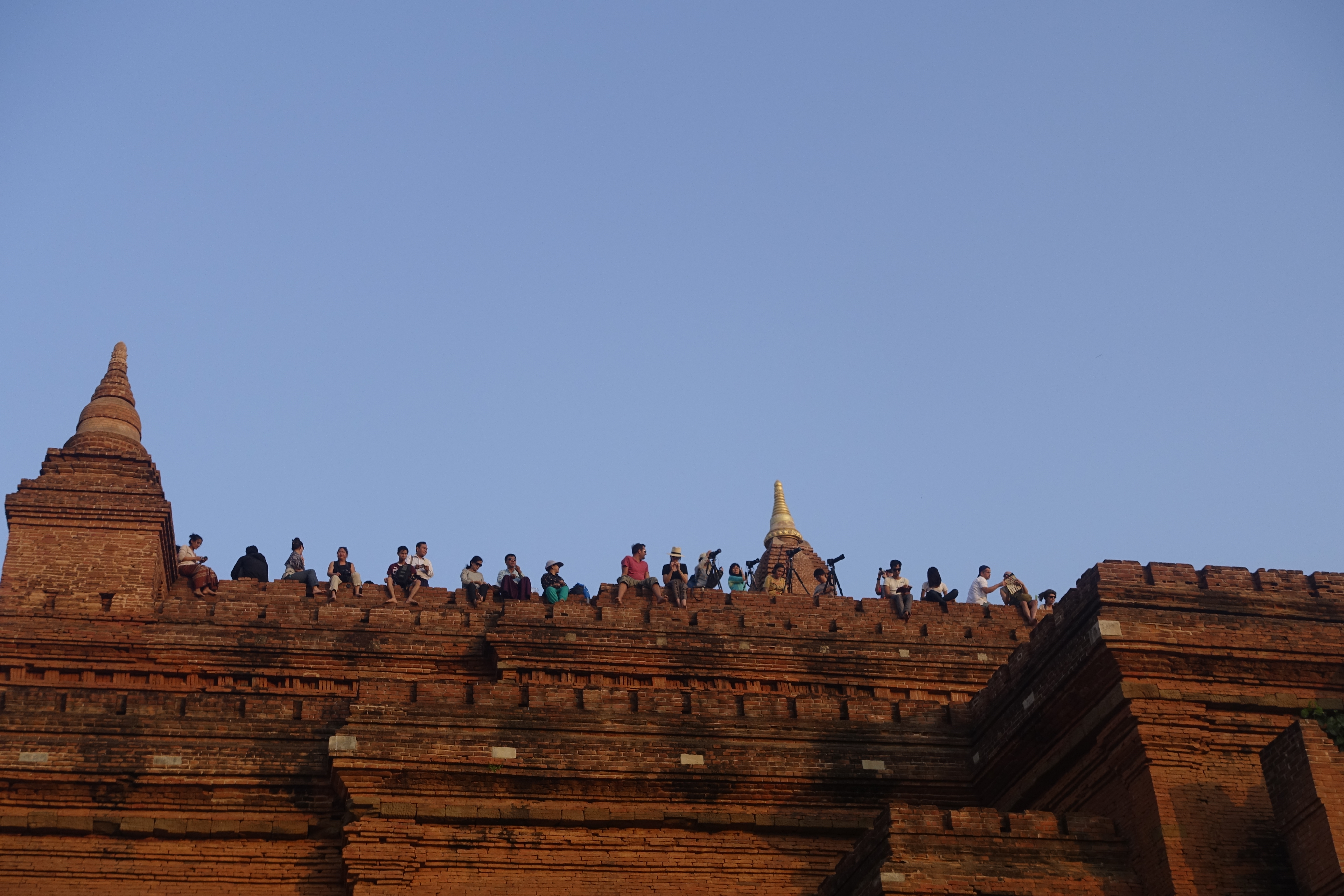Bagan: Koreans in the sand
I’d decided to fly to Bagan rather than attempt a 12-hour bus journey while sick, but even flying was hard in the state I was in. Hell, packing was hard. All I wanted to do was sleep. In Bagan, I finally had the good sense to ask for a doctor. He arrived, wearing a longyi, checked me out, and gave me antibiotics. Thank goodness for Cipro.
By morning I was well enough to head out into Bagan’s wondrous landscape of desert sands and old temples. There are thousands of temples and pagodas scattered across the area, some of them enormous and well populated with tourists, others abandoned and alone in the fields. I got around on a rented ebike, which is a scooter that runs on battery power.
As I cruised around, I noticed a surprising number of Koreans, and I fell into conversation with some ajummas on a group tour at one of the temples. Toward sunset, after abandoning a crowded temple just before the sun went down, I was scooting along on a sandy trail when I ran across three young Koreans who were struggling with a single ebike and looking for the famous sunset spot. We got to talking in Korean, and I gave one of them a lift back out of the Central Plain, and we all had dinner together. For the next couple of weeks, I would travel with Myoungsun, a journalist, and intermittently with Hyesun and Kihoon, two students who had come to Myanmar together.
Bagan really has a magic about it. You can go off by yourself and climb around a 900-year-old temple and climb up to see dozens more from the rooftop. There’s no one monument that stands out, but all of them together create a strange environment. At times, I would look out at the miles and miles of temples and think, what a colossal waste of government money. I suppose poor governance is nothing new in Burma.
Mandalay: A wall and a tour
Mandalay is a dump. It’s a big, endless grid of wide streets, many of them crumbling to dust. I found no districts with distinctive character, except for a very small area that is Mandalay’s poshest mall — not that posh — plus some new apartments. There’s not a lot to see or do in Mandalay. The character of the city is summed up in its central monument, which is a very, very long wall that just repeats and repeats, enclosing a military base and a poor-quality reconstruction of the old royal palace.
What you do in Mandalay is leave Mandalay and go outside of it. Hyesun arranged a taxi tour for us, and we spent a day zipping from place to place: a giant heap of bricks that was supposed to be the world’s largest pagoda but never got finished; a hill with a bunch of temples; a town you see by horse cart. It was all mediocre. After Bagan, it was going to take more than a pile of bricks to impress. For sunset we went to U Bein Bridge, which is famous for being long, wooden, poorly built, and lacking in handrails (it looks rustic in photos). It was packed with tourists, of course, but it was pleasant enough to descend from the bridge and watch the sunset from a small island river, where there are bars set up for the tourists.
In some ways, though, the most interesting day in Mandalay was the one where we didn’t do anything much, other than go to the city palace and decide it was boring. Hyesun and Kihoon had gone ahead to Kalaw, while Myoungsun and I lingered for another day. We went to an optician to replace Myoungsun’s lost glasses, and we got to see the way that they used a case full of different lenses and a pair of test glasses to work out the prescription strength; we went to a mall, where I bought a sweater and a knit cap at the grocery store in preparation for the cold of Kalaw and trekking. It was a brief experience of Myanmar as a place to live in rather than tour across. It wasn’t appealing exactly — I have zero desire to live in Myanmar — but it was illuminating in its way.
Next up: Kalaw and the trek to Inle Lake.

